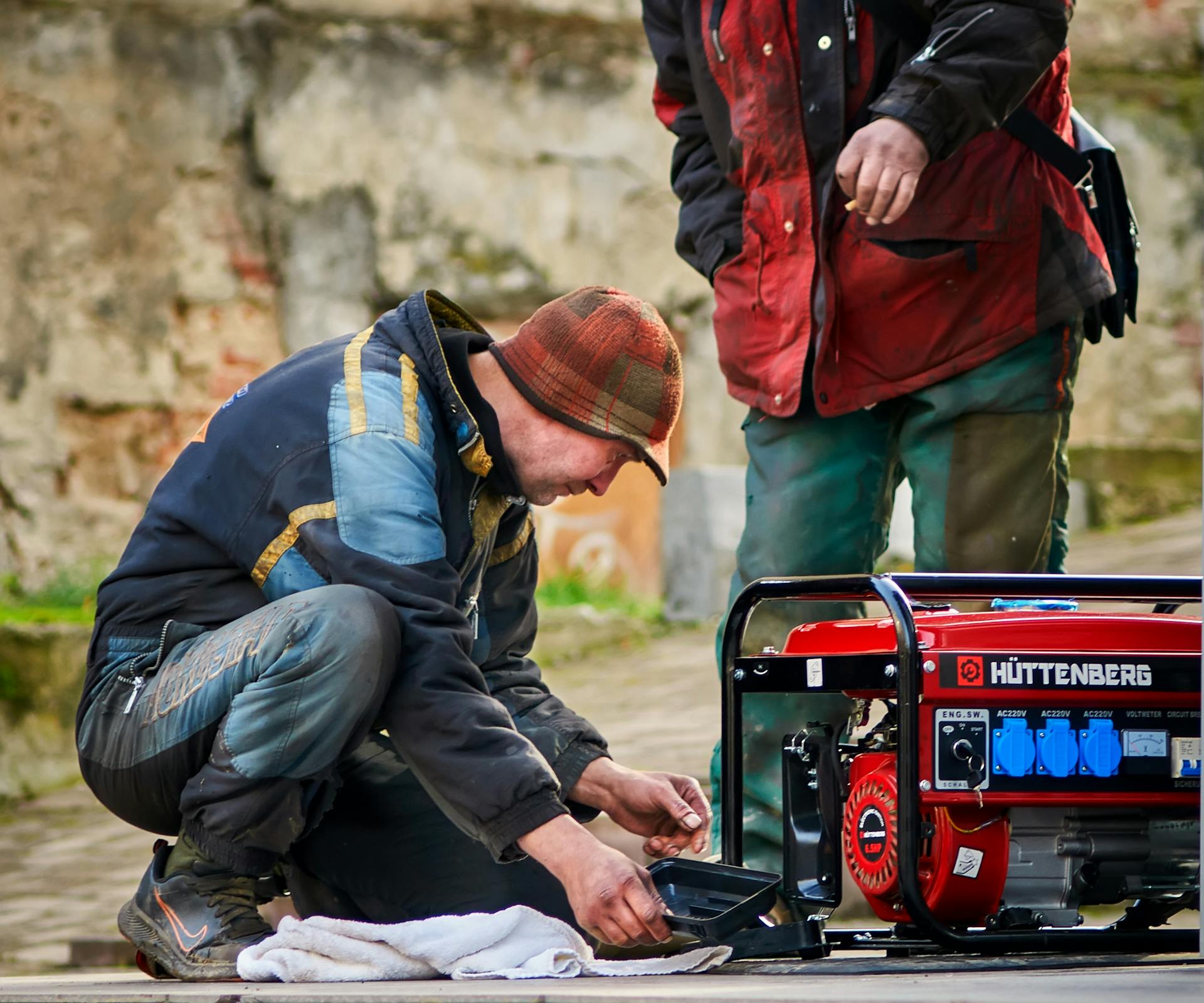
Building a vibration-powered generator is a fascinating project that can harness the energy from everyday vibrations to power devices.
The first step is to understand the principles behind vibration-powered generators. These devices convert mechanical energy into electrical energy using piezoelectric materials or electromagnetic induction.
To build a vibration-powered generator, you'll need a few key components, including a piezoelectric material, a vibration source, and an electrical circuit.
A piezoelectric material, like lead zirconate titanate (PZT), is a crucial part of a vibration-powered generator, as it can generate an electric charge in response to mechanical stress.
The vibration source can be anything from a motor to a human foot, as long as it can produce a consistent and strong vibration.
Generator Design and Components
A vibration-powered generator relies on a specialized design to harness and convert vibrations into electrical energy. The core components of a vibration-powered generator include a piezoelectric material, a mechanical structure, and an electrical circuit.
The piezoelectric material, such as lead zirconate titanate, is responsible for converting mechanical stress, like vibrations, into an electrical charge. This material is often used in sensors and actuators.
The mechanical structure of a vibration-powered generator typically consists of a cantilever or a diaphragm that is attached to the piezoelectric material. This structure is designed to amplify the vibrations and increase the energy harvesting efficiency.
The electrical circuit of a vibration-powered generator is typically a simple circuit that includes a rectifier, a capacitor, and a voltage regulator.
Piezoelectric Nanogenerator
Researchers at the University of Southampton have developed a piezoelectric nanogenerator that enhances current density using a three-dimensional intercalation electrode. This technology has the potential to revolutionize energy harvesting.
A micro electromagnetic generator for vibration energy harvesting has been developed by Dr. Steve Beeby and his team, which generates electrical energy from vibrations and movements in its environment. This generator is 10 times more powerful than similar devices.
The VIBES project, an EU-funded initiative, has led to the development of this generator, which is designed to power wireless sensors that monitor industrial plant conditions. The generator is less than 1 cubic cm in size and is intended for installation in air compressor units.
Vibration energy harvesting is gaining interest as a means to power wireless sensor nodes, offering the potential to replace or augment batteries. This technology is particularly attractive for embedded applications and wireless sensor networks containing hundreds of sensor nodes.
Parts List
To make your vibration generator, you'll need a few key components. The code for the project is available for free on GitHub.com.
A microcontroller is a crucial part of the vibration generator. You can use a Raspberry Pi Pico or RP2040, or any other suitable microcontroller.
You'll need a way to power the microcontroller, which can be done using a USB lead or a battery pack. A breadboard is optional but can make prototyping easier.
For more insights, see: Do You Need an Inverter Generator for Home Backup

Jumper wires or regular wire will be necessary for connecting components. A solenoid is required to create the vibration, and a speaker could also work in its place.
An OLED display SSD1306 can be added for a display, but it's not essential. A 9 Volt Cell and battery clip, or a 9-12 volt dc supply, will be needed to power the solenoid.
A rotary encoder is optional, but a momentary switch could be used instead. A 2N2222 Transistor is required, and you can use alternatives like 2N3904, BC547, BC548, or 2N3906.
A 1N4001 Diode is also required for additional protection, and a 1N4002 can be used as an alternative.
Additional reading: Can a Ac Motor Be Used as a Generator
Solenoid or Speaker
A solenoid can be a great option for your generator, but it's worth considering a speaker as an alternative. We used a speaker from a broken cabinet and achieved good results by gluing a Lego rod with a hole in it onto the speaker.
If you decide to go with a solenoid, you can find them for under £1 on AliExpress, with some deliveries taking as little as a week. However, be aware that some solenoids may not work as well as others.
We experimented with different solenoids, including the 12-volt TAU-0520B and HS-0530B, and found that they all worked but could be improved with some modifications. Adding a small piece of tubing to the underside of the shaft reduced the distance it moved and made the vibrations stronger.
Amazon offers solenoids for a higher price, but still significantly cheaper than what we used in school.
Frequently Asked Questions
What does a vibration generator do?
A vibration generator converts kinetic energy from vibrations into electrical energy, harnessing the power of movement to produce electricity. This innovative technology can be used in various applications, from powering small devices to generating energy in remote areas.
Featured Images: pexels.com


